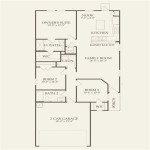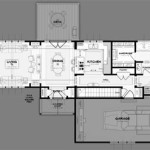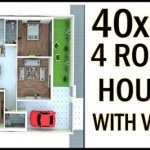Planning for a house is an exciting yet daunting task. With so many factors to consider, it's easy to feel overwhelmed. However, by taking a step-by-step approach and doing your research, you can create a home that perfectly suits your needs and lifestyle.
1. Define Your Needs and Wants:
Start by clearly defining your needs and wants for your new home. Consider the number of bedrooms and bathrooms you need, the size of the living areas, and any special features you desire, such as a home office, a playroom for the kids, or a backyard for entertaining.2. Set a Budget:
Determine how much you can comfortably afford to spend on your new home. This will help you narrow down your search and make informed decisions throughout the planning process.3. Choose a Location:
Consider factors such as proximity to work, schools, amenities, and public transportation when selecting a location for your new home. Consider both the current and future development plans for the area.4. Find the Right Builder or Architect:
If you plan to build a custom home, choosing the right builder or architect is crucial. Research their reputation, experience, and past projects to ensure they align with your vision and budget.5. Select a House Plan:
If you're not building a custom home, you'll need to select a house plan that meets your needs. There are countless options available, so take your time and compare different plans to find one that suits your lifestyle and budget.6. Consider Energy Efficiency:
Incorporate energy-efficient features into your home design to save money on utility bills and reduce your carbon footprint. Consider factors such as insulation, windows, appliances, and lighting.7. Create a Functional Layout:
The layout of your home should be functional and flow seamlessly. Consider the relationship between rooms, traffic patterns, and the placement of windows and doors for natural light and ventilation.8. Personalize Your Home:
Don't forget to add your personal touch to your new home. Choose finishes, fixtures, and decor that reflect your style and personality. Make it a space that truly feels like home.9. Get the Necessary Permits and Approvals:
Before you start construction, ensure you have all the necessary permits and approvals from local authorities. This may include building permits, zoning permits, and utility connections.10. Manage the Construction Process:
If you're building a custom home, it's important to manage the construction process closely. Regularly inspect the work, communicate with the builder, and ensure that everything is being done according to plan. By following these steps and paying attention to every detail, you can create a home that meets your needs, reflects your style, and provides you with years of comfort and enjoyment.
House Plans How To Design Your Home Plan

House Plans How To Design Your Home Plan

House Plans How To Design Your Home Plan

House Plans How To Design Your Home Plan

Floor Plans Types Symbols Examples

House Plan Maywood Sater Design Collection

5 Small And Simple 2 Bedroom House Designs With Floor Plans Design Es

Peach Tree House Plan Ranch Floor Designs

Top 50 Amazing House Plan Ideas Engineering Discoveries Budget Plans Bungalow Floor 30x50

Grand Ridge House Plan A Classic Design Archival Designs








